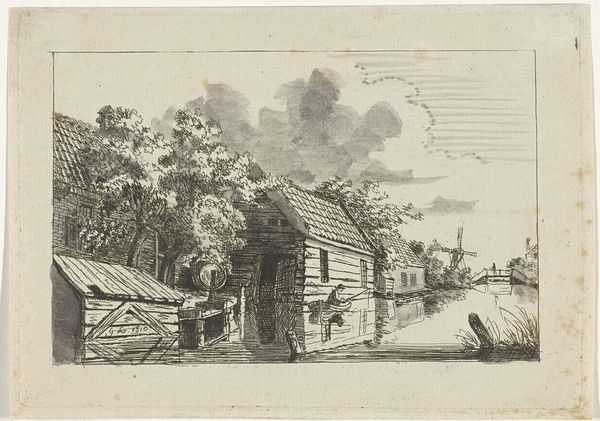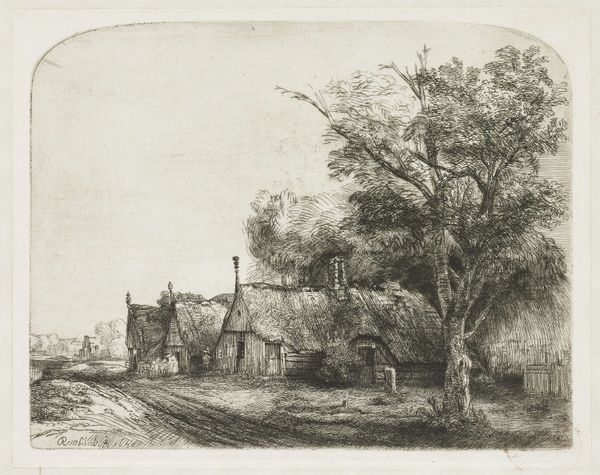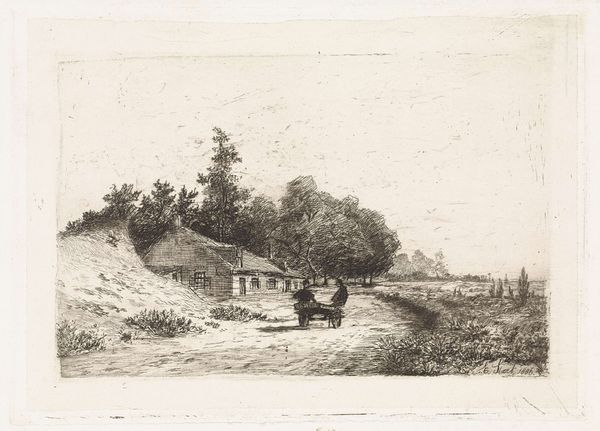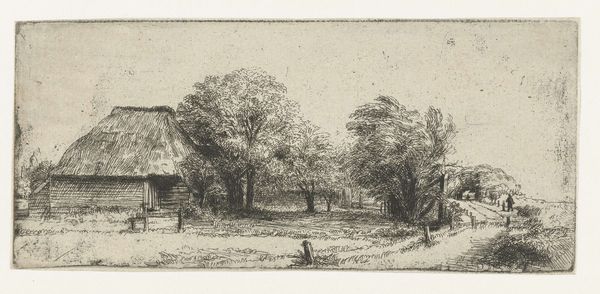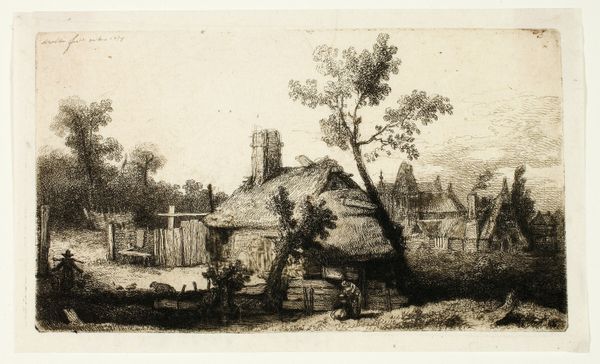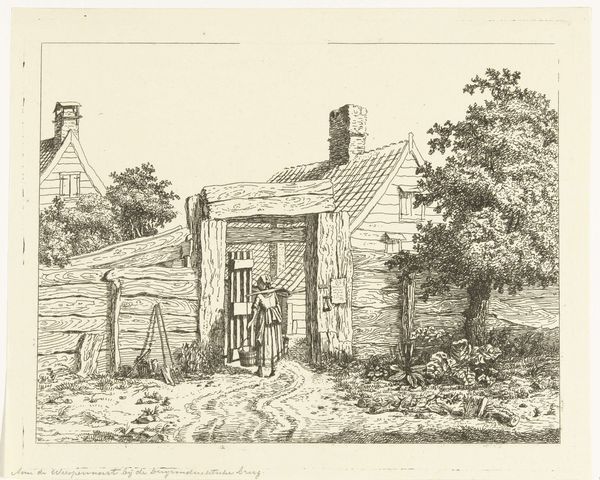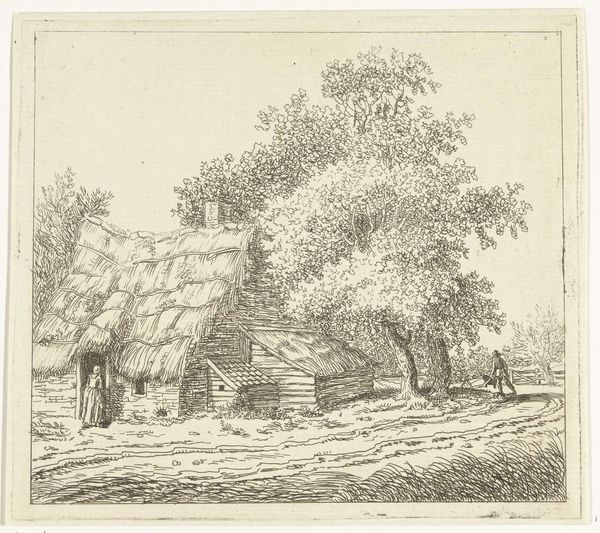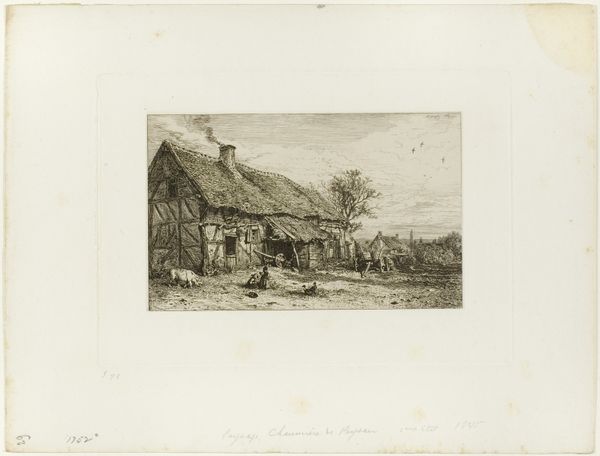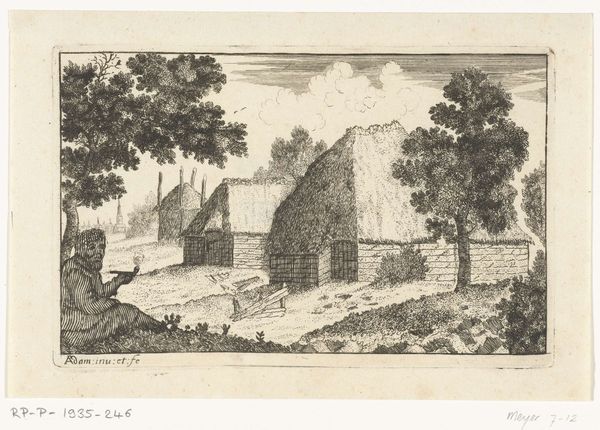
print, etching
#
dutch-golden-age
# print
#
pen sketch
#
etching
#
old engraving style
#
landscape
#
pen-ink sketch
#
line
#
cityscape
#
genre-painting
Dimensions: height 132 mm, width 189 mm
Copyright: Rijks Museum: Open Domain
Curator: This etching, dating back to 1810, is titled "Schuitje bij een boothuis," or "Boat by a boathouse," crafted by Gerrit Lamberts. It resides here in the Rijksmuseum. Editor: My initial sense is one of quiet industry. The landscape is simple, almost utilitarian, yet there's a stillness to it. A solitary figure fishes—it's about everyday existence. Curator: I agree. What I find particularly compelling are the line work and details—the texture of the boathouse wood and roof tiles and its surrounding vegetation. All the tonal variations achieved with line speak to the skilled etching process typical of the Dutch Golden Age tradition of landscape and cityscape images. There is even a glimpse of a windmill along the canal. Do these details have resonance for you? Editor: Absolutely, and the boathouse being centered underscores the link between labour and domesticity in Dutch society. In other similar Golden Age images, for instance, class tensions are very foregrounded. By contrast, here there are no visible conflicts, almost an attempt to visually unify the rural social strata, to make a picture of an idyllic time gone by. It's romanticizing simplicity through its composition. Curator: That resonates strongly for me, too. Looking closely, notice the contrast between the dark, solid structures of the boathouse against the hazy sky. It suggests an enduring sense of peace rooted in labor and an appreciation for nature. But how do you think the use of such an "old engraving style" impacted contemporary viewers? Editor: For its own contemporary moment in the 19th century, the image invokes an artistic lineage that connects to older histories, but maybe also glosses over complex class conflicts or environmental changes associated with industrialization—what’s excluded from a picture like this is often telling, such as, in this case, the economic drivers behind a seemingly uncomplicated scene. The windmill may belie these connections, but it doesn't foreground it. Curator: It makes us rethink this work by Lamberts and consider the symbols within their specific social context. Editor: Indeed. It leaves me with questions about collective memory, representation, and the artist's vision. Curator: It's as though, even within something as simple as a boathouse scene, we find layered cultural dialogues and evolving meanings.
Comments
No comments
Be the first to comment and join the conversation on the ultimate creative platform.
